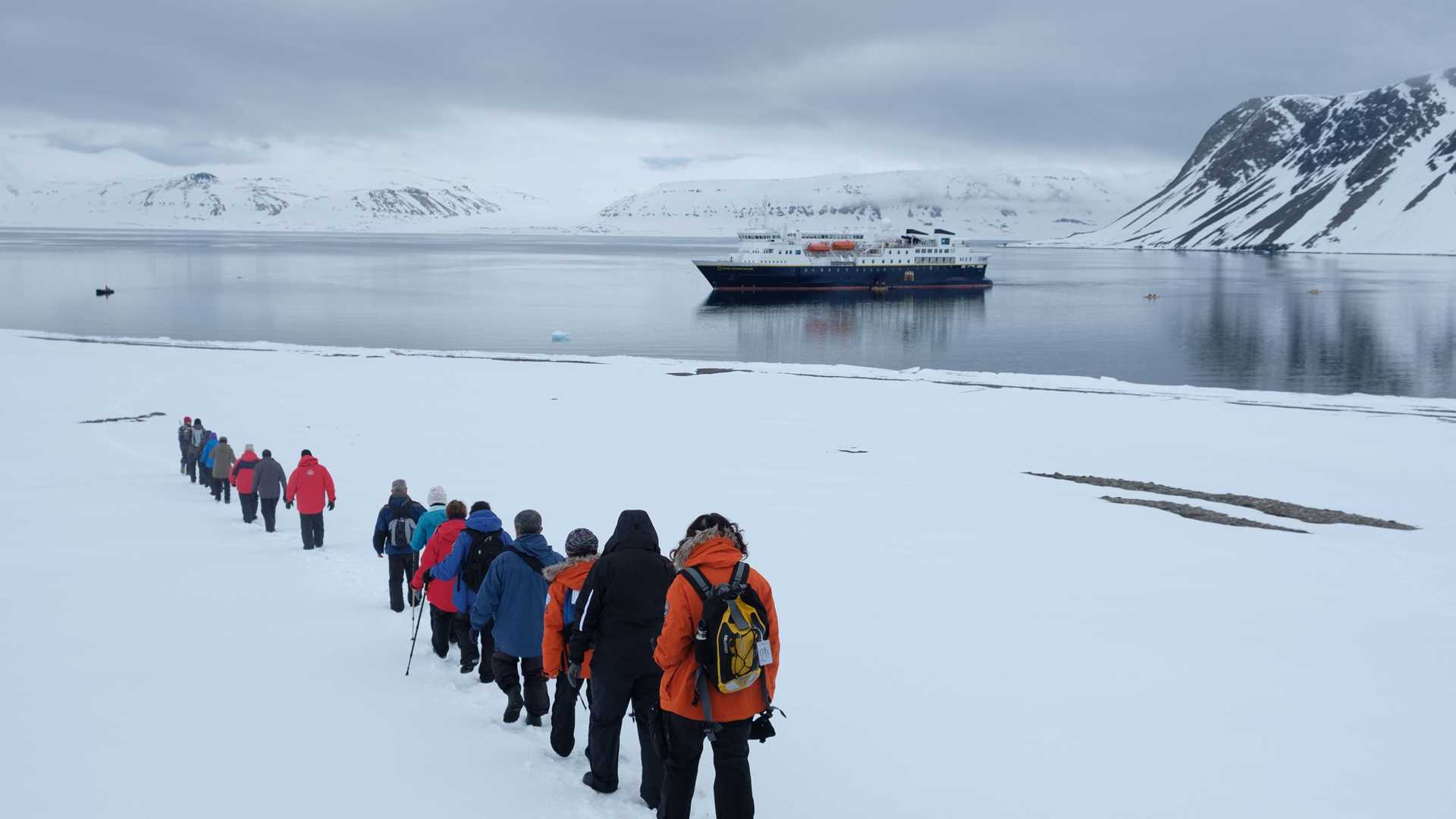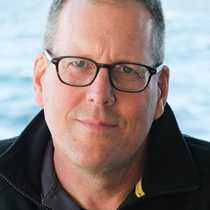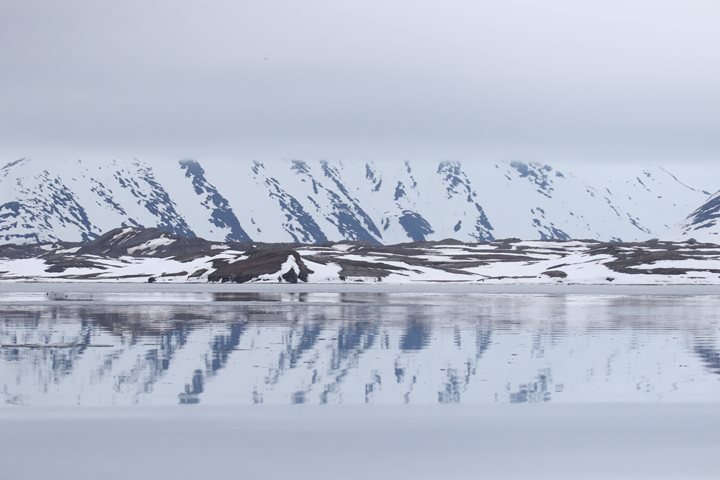During the night, the National Geographic Explorer made its way across the northern part of Spitsbergen and then south down the Hinlopenstretet (the Hinlopen Strait). However, in the early morning, we encountered a lot of ice and had to make alternative plans. The ship headed north, passing Alkefjellet, where we saw thousands of seabirds feeding in these rich waters; the amazing sight was a mere appetizer since we would be returning later in the day.
The planned morning activities included kayaking and numerous walks in Faksevagen. As we came ashore, snowflakes gently fell to the ground under the flat, calm conditions. The walks followed the shoreline and just above the high-tide mark, ice and snow covered the ground sloping gently up to the nearby hills. The pebbly beach, made up of many colored, well-rounded stones, became a topic of conversation. There was a lot of algae along the way, as well as other marine invertebrates. We also saw a number of captivating birds, including common eider ducks out in the fjord and a pair of rock ptarmigans spotted by long hikers. During a couple of moments of silence on the water, the eiders could be heard chatting.
The kayakers were able to once again enjoy a paddle and some quiet—away from the sounds of the ship and Zodiacs.
During lunch, the ship repositioned to Kapp Fanshawe and, specifically, the carboniferous limestone cliffs where tens of thousands of seabirds come each year to breed. The sights before us were beyond comprehension; thousands of Brünnich’s guillemots, kittiwakes, black guillemots, glaucous gulls, and great skuas could be seen on the cliffs or in the surrounding waters. The guillemots were particularly eye-catching as they gathered on the cliff ledges and on the snow and ice that had not yet sufficiently melted to reveal the ledges underneath. The captain expertly steered the ship along the length of the cliffs.
While we enjoyed the amazing birds, the divers headed off to carry out the last dive of our journey.
We then headed for Wahlenbergfjorden to explore and look out for wildlife. Pretty soon, we spotted two groups of walruses, and the ship made a slow approach, allowing us close-up views of a huddle of over a dozen males and females on an ice floe.
By teatime, the ship was heading into the fjord and the extensive ice fields ahead. And later there was a presentation on what it is like to live in Svalbard. But in the middle of it, the crew spotted three polar bears a far distance away. The ship approached the edge of the fast ice and gently parked to wait and see what the bears would do. As we waited we enthusiastically shared our amazement at the crew members ability to spot bears so far away. Alas, during dinner, we departed and left the polar bears behind us.
But the day was not over yet: after dinner, many of us met in the lounge for a game called, “How well do you know your naturalist?” We all received a fact or two about each naturalist and had to guess which fact applied to which naturalist. Each of the naturalists then revealed themselves and elaborated on the clues. It was a hilarious evening and a fitting end to another marvelous day up in the High Arctic, for during the night we had crossed the 80th parallel, a mere 1,200 nautical miles from the North Pole!







